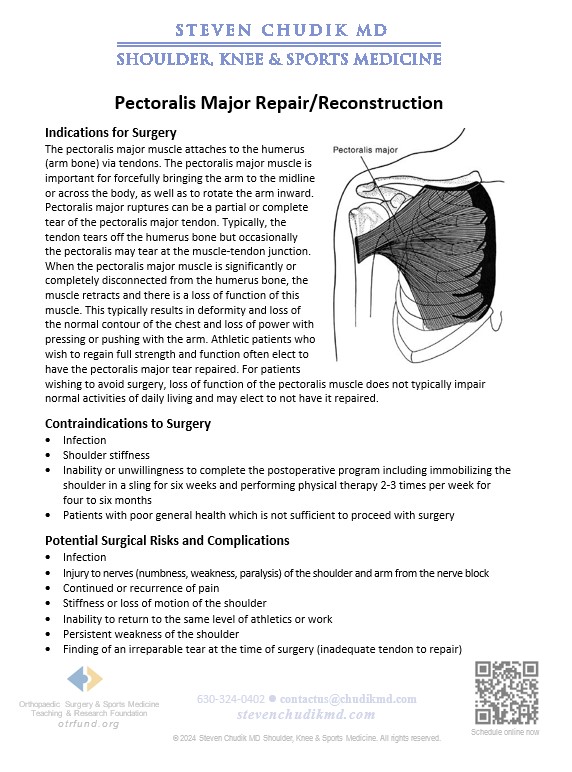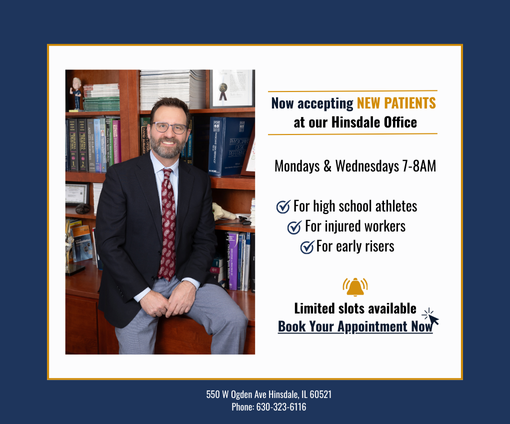The pectoralis major muscle attaches to the humerus (arm bone) via tendons. The pectoralis major muscle is important for forcefully bringing the arm to the midline or across the body, as well as to rotate the arm inward. Pectoralis major ruptures can be a partial or complete tear of the pectoralis major tendon. Typically, the tendon tears off the humerus bone but occasionally the pectoralis may tear at the muscle-tendon junction. When the pectoralis major muscle is significantly or completely disconnected from the humerus bone, the muscle retracts and there is a loss of function of this muscle. This typically results in deformity and loss of the normal contour of the chest and loss of power with pressing or pushing with the arm. Athletic patients who wish to regain full strength and function often elect to have the pectoralis major tear repaired. For patients wishing to avoid surgery, loss of function of the pectoralis muscle does not typically impair normal activities of daily living and may elect to not have it repaired.
Click below to read more>>>
Learn More
 Hannah Greving, Lyons Township High School, #35
Hannah Greving, Lyons Township High School, #35
Dr Steven Chudik founded OTRF in 2007 to keep people active and healthy through unbiased education and research. Click to learn about OTRF’s free programs, educational opportunities and ways to participate with the nonprofit foundation.
1010 Executive Ct, Suite 250
Westmont, Illinois 60559
Phone: 630-324-0402
Fax: 630-920-2382
(New Patients)
550 W Ogden Ave
Hinsdale, IL 60521
Phone: 630-323-6116
Fax: 630-920-2382
4700 Gilbert Ave, Suite 51
Western Springs, Illinois 60558
Phone: 630-324-0402
Fax: 630-920-2382

© 2025 © 2019 Copyright Steven Chudik MD, All Rights Reserved.

